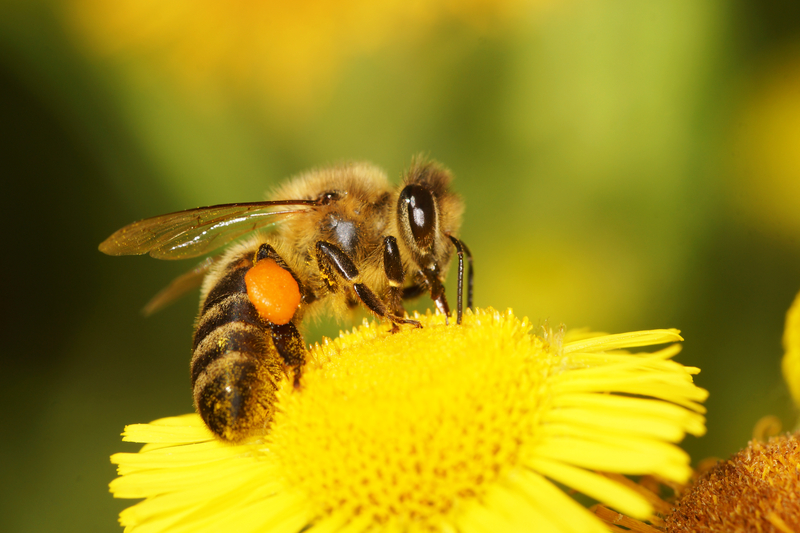Transform Your Orchid Care Routine with Expert Advice
Posted on 20/05/2025
Orchids are among the most coveted houseplants, admired for their exotic beauty and breathtaking blooms. Yet for many, achieving thriving, re-blooming orchids at home can be a mystery. If you've struggled with orchid care or simply want to optimize your efforts, this comprehensive guide will provide you with innovative, expert-approved tips to transform your orchid care routine and help your plants flourish like never before.
Why Expertise Matters in Orchid Care
Orchids are unique plants with specialized needs. Unlike typical houseplants, orchids grow as epiphytes (air plants) in their natural habitat, clinging to trees and thriving in filtered light and good airflow. Understanding this distinction is key to mastering orchid care tips.
- Expert advice prevents common mistakes such as overwatering, incorrect potting mix, and poor lighting conditions.
- Professional growers and botanists have developed science-based strategies for optimal watering, feeding, and environmental control.
- Incorporating expert guidance can help novice and experienced orchid owners alike achieve more consistent blooms and healthier foliage.

Essential Elements of Successful Orchid Care
To truly transform your orchid care routine, focus on the following critical aspects:
1. Choosing the Right Orchid Variety
There are over 25,000 orchid species and hundreds of thousands of hybrids, but not all are equally suited to home environments.
- Phalaenopsis (Moth Orchids): Ideal for beginners due to their adaptability and forgiving nature.
- Dendrobium: Known for their tall canes and vivid flowers. They thrive in bright, filtered light.
- Cattleya: Famous for their fragrance and large blooms, these require attention to humidity and airflow.
Expert Tip: Start with robust varieties like Phalaenopsis and gradually explore less common species as your skills increase.
2. Recreate Natural Orchid Lighting
Light is the most influential factor in orchid growth and blooming. Most orchids prefer indirect, bright light--think dappled sunlight under a forest canopy.
- Position orchids near an east- or south-facing window with filtered curtains.
- Use grow lights for consistent, year-round light.
- Observe leaf color: Healthy leaves should be bright green, not dark or yellow.
Expert Advice: Avoid direct midday sun, which can scorch leaves. If you notice weak or spindly growth, gradually increase light exposure.
3. Mastering Watering Techniques
Overwatering is the most common cause of orchid decline. Expert orchid growers stress a "soak and dry" routine for most orchid species.
- Allow the potting medium to nearly dry out between waterings.
- Water early in the day to ensure leaves and roots dry before night.
- Use room-temperature, non-softened water for the healthiest orchids.
- Avoid leaving water in the saucer to prevent root rot.
Pro tip: Stick your finger into the potting mix up to your second knuckle. Only water if it feels dry.
4. Selecting and Maintaining the Best Potting Mix
Unlike garden or houseplant soil, orchids do best in specialized media that offers excellent drainage and airflow.
- Bark chips: The most popular choice, available in fine, medium, or coarse grades to suit root sizes.
- Sphagnum moss: Retains more moisture, ideal for smaller orchids or dry climates but requires careful monitoring to avoid rot.
- Additional materials: Charcoal, perlite, or clay pellets help enhance drainage.
An expert-recommended mix may combine these elements based on your orchid's habitat and growth habits.
5. Fertilizing for Vigorous Growth
Fertilization fuels orchid blooms and vibrant foliage, but balance is essential. Over-fertilizing can lead to root burn or salt buildup.
- Apply a balanced "orchid fertilizer" (20-20-20) diluted to half or quarter strength every 2-4 weeks in the growing season.
- Flush the potting medium with plain water periodically to prevent mineral accumulation.
- Switch to a high-phosphorus fertilizer before expected blooming to encourage more flowers.
Expert Insight: Always fertilize on a wet root system to avoid root tip damage.
Advanced Orchid Care Tips from Professionals
Ready to level up your orchid care? Here are advanced strategies to achieve lush, repeat-blooms and robust health:
Regular Repotting for Healthier Roots
- Repot every 1-2 years, or when the medium breaks down or roots outgrow the pot.
- Use sterile tools to trim dead roots and remove old, decomposed medium.
- Upgrade to a slightly larger pot only if necessary; orchids like their roots snug.
Orchid Pruning Techniques
- Cut spent flower spikes near the base to encourage new growth.
- For Phalaenopsis, trim just above a node to stimulate potential side spikes and more blooms.
- Remove yellow or shriveled leaves to boost plant vigor.
Expert perspective: Always use sharp, sterilized scissors to minimize infection risk.
Monitoring Pests and Diseases
Orchids are generally resistant, but vigilance is key:
- Watch for signs of scale, mealybugs, or spider mites (sticky residue, webbing, or cottony spots).
- Wipe leaves with a damp cloth and treat with insecticidal soap if pests appear.
- Check for signs of fungal rot (black, mushy roots) and act quickly by repotting and reducing watering.
Creating Ideal Microclimates
- Maintain humidity between 40-60% for most orchids. Use a tray of pebbles and water or a room humidifier.
- Aim for gentle air circulation to prevent mold and encourage healthy growth. Small fans can help in stuffy spaces.
- Keep orchids away from cold drafts and fluctuating temperatures. Consistency is key!
Expert Myths and Misconceptions in Orchid Care
Let's clear up some common mistakes even experienced growers can make:
- Myth: Orchids are delicate and hard to grow. Fact: With the right care, many orchids are no more difficult than common houseplants.
- Myth: You must water orchids with ice cubes. Fact: Most experts recommend tepid water; cold water can shock orchid roots.
- Myth: Blooming happens only once. Fact: Consistent care allows most orchids to bloom multiple times per year.
- Myth: Orchids need feeding every week. Fact: Less is more--overfeeding is more harmful than underfeeding.
Signs of a Healthy, Thriving Orchid
How do you know your new orchid care routine is successful? Look for these signs:
- Firm, green leaves (without wrinkles or spots).
- Abundant, plump roots with bright tips and firm texture.
- Seasonal spikes of blooms that last for weeks or even months.
- Lack of pests, mold, or leaf drop.
Patience is essential; orchids grow slowly compared to other houseplants. But with a transformed, expert-informed regimen, your orchids will soon reveal their true beauty.
Caring for Orchids Throughout the Year
Spring and Summer Orchid Care
- Increase watering frequency as days get warmer and brighter.
- Fertilize regularly to support active growth and developing flower spikes.
- Watch for heat stress; shield plants from intense sun and maintain humidity.
Autumn and Winter Orchid Care
- Reduce watering as growth slows; let the medium dry further between waterings.
- Maintain light exposure with supplemental lighting if natural sunlight dwindles.
- Avoid drafty windows and sudden temperature drops.
Frequently Asked Questions About Advanced Orchid Care
- How often should I water my orchid?
It depends on variety, potting medium, and climate. Most orchids need watering every 7-14 days, with a thorough soak and time to dry out between. - Why are my orchid leaves turning yellow?
This may indicate overwatering, root problems, or a need for repotting. Check the roots and potting mix for health. - My orchid won't bloom again - what am I doing wrong?
Insufficient light is the most common cause. Gradually increase light exposure and fertilize with a bloom booster before the blooming season. - How can I increase humidity for my orchids?
A pebble tray, grouping plants together, or a room humidifier are great ways to safely boost humidity around your orchids.

The Benefits of Expert-Driven Orchid Care
Adopting an expert-approved orchid care routine doesn't just help your plants look their best--it makes orchid cultivation easier, more enjoyable, and more rewarding. Here's what you can expect when you apply professional guidance to your care routine:
- Longer-lasting blooms: Orchids cared for expertly can flower repeatedly, sometimes multiple times per year.
- Healthier roots and foliage with reduced risk of rot, pests, and disease.
- Easier maintenance with predictable watering and feeding schedules led by your orchid's own natural cycles.
- Stress-free orchid ownership with fewer plant losses and more robust, thriving specimens.
Summary: Revolutionize Your Orchid Care Today
Whether you're hoping for your first re-bloom or aiming to build an indoor jungle of rare orchids, expert knowledge is the key to success. By applying professional orchid care advice--from perfecting your watering and lighting to fine-tuning your feeding and repotting practices--you can transform your orchid care routine and enjoy the rewards of healthy, radiant, and repeatedly blooming orchids for years to come.
For more expert orchid care tips and in-depth advice, keep exploring resources, follow credible growers, and never stop experimenting. Your orchids--and your home--will thank you with every dazzling bloom!



